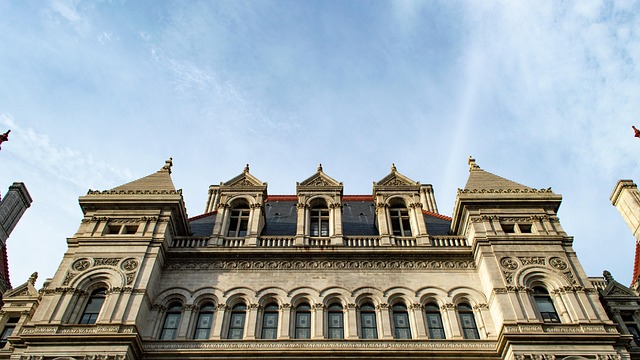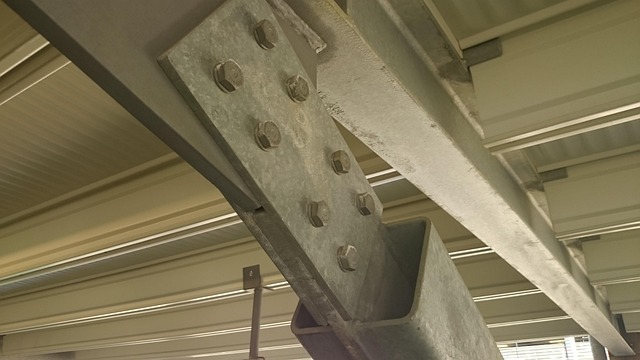Glulam, a revolutionary wood product, enhances construction sustainability with increased strength and environmental benefits. Facing deforestation challenges, the industry advocates responsible forest management through FSC/PEFC certification. Sustainable logging practices, alternative materials, and circular economy approaches reduce glulam's environmental impact. Traceability and transparency in supply chains maximize its eco-friendly advantages, aligning with global sustainability goals and promoting a greener construction future.
“Discover the future of sustainable construction with a focus on glulam—a powerful, eco-friendly alternative in the realm of wood products. This article explores the intricate journey from forest to building site, delving into the environmental considerations and innovative practices shaping the sustainability of glue laminated beams (glulam).
From understanding the material’s origins to market trends, we navigate the challenges and opportunities in sourcing, highlighting responsible logging, processing innovations, and the critical role of supply chain transparency. Uncover how glulam is revolutionizing green construction materials.”
- Understanding Glulam: Material and Process Overview
- Environmental Impact: Challenges and Opportunities in Sourcing
- Sustainable Logging and Forest Management Practices
- Processing and Glue Formulation for Reduced Emissions
- Traceability and Transparency Throughout the Supply Chain
- Market Trends and Future Prospects of Green Construction Materials
Understanding Glulam: Material and Process Overview

Glulam, or Glue Laminated Beams, is an innovative and sustainable wood product that has been revolutionizing the construction industry. It involves laminating multiple pieces of wood together with strong adhesives to create a single, robust structural element. This process enhances the natural strength and stability of wood, enabling it to support significant loads, making glulam a popular choice for modern architectural designs.
The sustainability of glulam lies in its ability to utilize recycled content from various wood sources while offering energy-saving advantages compared to traditional building methods. The laminated beam structural advantages include reduced waste, improved dimensional stability, and enhanced resistance to natural elements, ensuring longevity and durability. Discover more about these eco-friendly solutions at unalam.com.
Environmental Impact: Challenges and Opportunities in Sourcing

The environmental impact of sourcing materials for glulam production presents both challenges and opportunities. One of the primary hurdles is deforestation, as the demand for timber increases pressure on natural forests. Unsustainable logging practices can lead to habitat loss, biodiversity decline, and carbon emissions, exacerbating climate change. However, this also opens up a chance to promote responsible forest management and certification schemes like FSC or PEFC, ensuring that the timber used in glulam comes from well-managed sources.
Additionally, exploring alternative materials and production methods can significantly reduce the environmental footprint of laminated beam manufacturing. Reusing materials for beams, adopting circular economy principles, and embracing innovative technologies offer viable paths towards sustainability. For instance, by utilizing waste products from other industries or recycling wood, manufacturers can decrease their reliance on virgin resources. Ultimately, transitioning to carbon-neutral building supplies aligns with global efforts to mitigate environmental degradation, positioning glulam as an eco-friendly construction solution. To learn more about sustainable sourcing practices, visit us at unalam.com.
Sustainable Logging and Forest Management Practices

Sustainable logging and forest management are integral components of ensuring the longevity of glue laminated beams (glulam) as a biodegradable engineering solution. Responsible practices include careful harvesting techniques that prioritize preserving forest ecosystems, ensuring biodiversity, and maintaining water quality. These methods involve selective cutting schedules to prevent over-exploitation and promote regrowth, as well as the implementation of reforestation programs.
By adopting these sustainable logging strategies, glulam manufacturers can source sustainable lumber for buildings while minimizing environmental impact. This approach not only contributes to the overall sustainability of the construction industry but also extends the life expectancy of glued lumber products. For more information and to explore our commitment to sustainable sourcing, visit us at 18 Clifton St, Unadilla, NY 13849 anytime.
Processing and Glue Formulation for Reduced Emissions

The processing and formulation of glue play a significant role in enhancing the sustainability of Glue Laminated Beams (glulam). Advanced manufacturing techniques are being employed to minimize emissions and reduce the environmental impact during glulam production. By optimizing these processes, manufacturers can create stronger and more efficient structural elements while also lowering their carbon footprint. One key aspect is switching to natural glue alternatives for beams, which offer lower emissions and faster curing times without compromising structural integrity.
This shift towards sustainable timber frame construction methods ensures that the glulam industry contributes to a greener future. The use of eco-friendly adhesives allows for the creation of high-performance structures while promoting responsible forest management. To learn more about these innovations, visit us at 18 Clifton St, Unadilla, NY 13849 anytime. By adopting these practices, the industry can meet the growing demand for environmentally conscious building solutions without sacrificing structural reliability.
Traceability and Transparency Throughout the Supply Chain

In today’s world, consumers and businesses alike are increasingly conscious of the sustainability of their products and supply chains. This is especially true for the construction industry, where the choice of building materials can have a significant environmental impact. Glue laminated beams (glulam), known for their exceptional strength and durability compared to traditional wooden structures or even steel, offer a compelling eco-friendly alternative. To truly embrace sustainability, however, it’s crucial to implement robust traceability and transparency throughout the entire glulam supply chain.
This means ensuring that every step in the process—from sourcing raw materials to final assembly—is meticulously documented and accessible for scrutiny. By providing clear, transparent data on where and how glulam is produced, processed, and delivered, stakeholders can make informed decisions about their environmental footprint. This practice not only promotes accountability but also encourages responsible forestry practices and resource-efficient building materials, ultimately contributing to the long-lasting strength of glued wood structures while minimizing the ecological toll. For more information or to discuss your specific needs, give us a call at (607) 369-9341.
Market Trends and Future Prospects of Green Construction Materials

The construction industry is experiencing a significant shift towards embracing green and sustainable materials, driven by growing environmental consciousness and stringent regulations. Among these, glulam (glue-laminated timber) is emerging as a prominent player in the market for its exceptional strength and sustainability. The demand for eco-friendly building solutions is accelerating the trend toward sustainable sourcing and supply chain management practices. As consumers become more environmentally aware, they actively seek out products with a lower carbon footprint, making sustainable lumber for buildings a hot topic in the industry.
Looking ahead, the future of green construction materials appears bright. The market is witnessing rapid innovation in material science, leading to advanced biodegradable engineering solutions that offer both structural integrity and environmental benefits. This shift towards sustainability not only reduces the industry’s carbon emissions but also promotes responsible forest management. With a focus on circular economy principles, manufacturers are exploring ways to recycle and repurpose materials, ensuring a more sustainable lifecycle for construction products. Visit us at 18 Clifton St, Unadilla, NY 13849, to learn more about how these trends are shaping the future of glulam and other green building materials.
The pursuit of sustainable sourcing and supply chain management for glulam (glue laminated beams) presents a promising pathway toward a greener construction future. By integrating environmentally conscious practices throughout the value chain, from responsible forestry to innovative glue formulations, we can mitigate the environmental impact associated with this powerful wood composite material. As market trends indicate a growing demand for green building solutions, embracing sustainable glulam practices not only benefits the planet but also positions manufacturers and builders as industry leaders in eco-friendly construction. The sustainability of glue laminated beams lies in our collective ability to navigate the supply chain responsibly, ensuring a prosperous and environmentally sound future for glulam and the buildings it supports.














